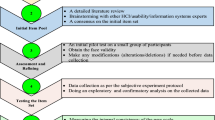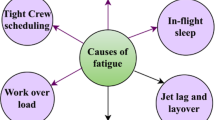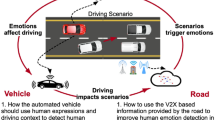Abstract
This paper presents a driver simulator, which takes into account the information about the user’s state of mind (level of attention, fatigue state, stress state). The user’s state of mind analysis is based on video data and biological signals. Facial movements such as eyes blinking, yawning, head rotations, etc., are detected on video data: they are used in order to evaluate the fatigue and the attention level of the driver. The user’s electrocardiogram and galvanic skin response are recorded and analyzed in order to evaluate the stress level of the driver. A driver simulator software is modified so that the system is able to appropriately react to these critical situations of fatigue and stress: some audio and visual messages are sent to the driver, wheel vibrations are generated and the driver is supposed to react to the alert messages. A multi-threaded system is proposed to support multi-messages sent by the different modalities. Strategies for data fusion and fission are also provided. Some of these components are integrated within the first prototype of OpenInterface: the multimodal similar platform.











Similar content being viewed by others
References
Benoit A, Caplier A (2005) Motion estimator inspired from biological model for head motion interpretation—WIAMIS05, Montreux, Suisse, April 2005
Torralba AB, Herault J (1999) An efficient neuromorphic analog network for motion estimation. IEEE Trans Circuits Syst-I: Special issue on bio-inspired processors and CNNs for vision 46(2)
Benoit A, Caplier A (2005) Head nods analysis : interpretation of non verbal communication gestures. IEEE ICIP, Genova
Benoit A, Caplier A (2005) Hypovigilence analysis: open or closed eye or mouth? Blinking or yawning frequency? In: IEEE AVSS, Como, Italy
Machine Perception Toolbox (MPT). http://mplab.ucsd.edu/grants/project1/freesoftware/MPTWebSite/API/
Bayes Net Toolbox for MatLab. http://www.cs.ubc.ca/∼murphyk/Software/BNT/bnt.html
Qiang Ji, Zhiwei Zhu, Peilin Lan (2004) Real-time nonintrusive monitoring and prediction of driver fatigue. IEEE Trans Vehicular Technol 53(4):1052–1068
Force Feedback Direct Input Library. http://courses.washington.edu/css450/Fall2003/web_contents/direct_input_lib/DirectInput.html
TORCS Driver Simulator. http://torcs.sourceforge.net/
Similar Network of Excellence. http://www.similar.cc/
Lal SK, Craig A (2002) Driver fatigue: electroencephalography and psychological assessment. Psychophysiology 39(3 May):313–321
Healey J, Seger J, Picard R Quantifying driver stress: developing a system for collecting and processing bio-metric signals in natural situation–MIT technical report. No. 483
OpenCV library. http://www.intel.com/technology/computing/opencv
Acknowledgment
This work has been supported by the Simlar Network of Excellence.
Author information
Authors and Affiliations
Corresponding author
Rights and permissions
About this article
Cite this article
Benoit, A., Bonnaud, L., Caplier, A. et al. Multimodal focus attention and stress detection and feedback in an augmented driver simulator. Pers Ubiquit Comput 13, 33–41 (2009). https://doi.org/10.1007/s00779-007-0173-0
Received:
Accepted:
Published:
Issue Date:
DOI: https://doi.org/10.1007/s00779-007-0173-0




